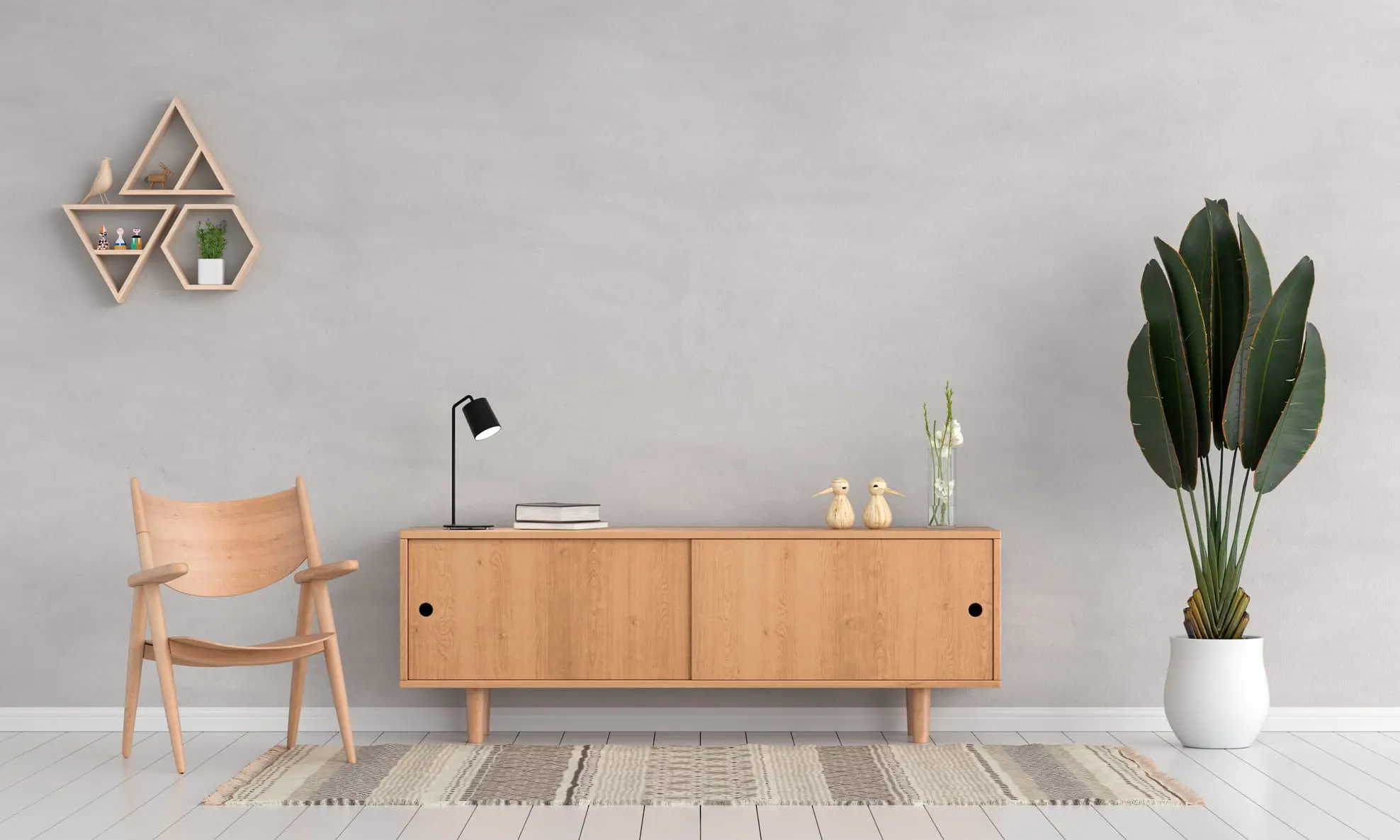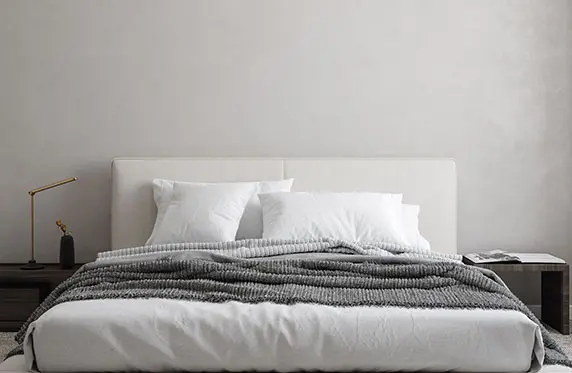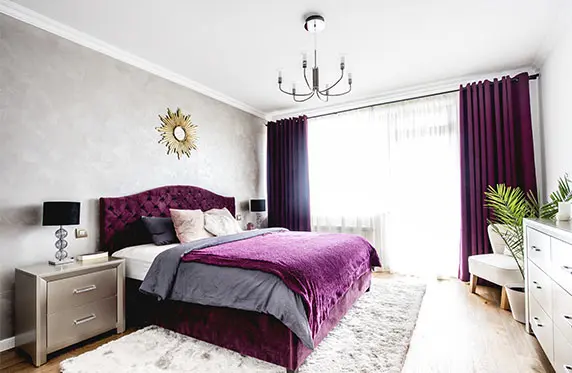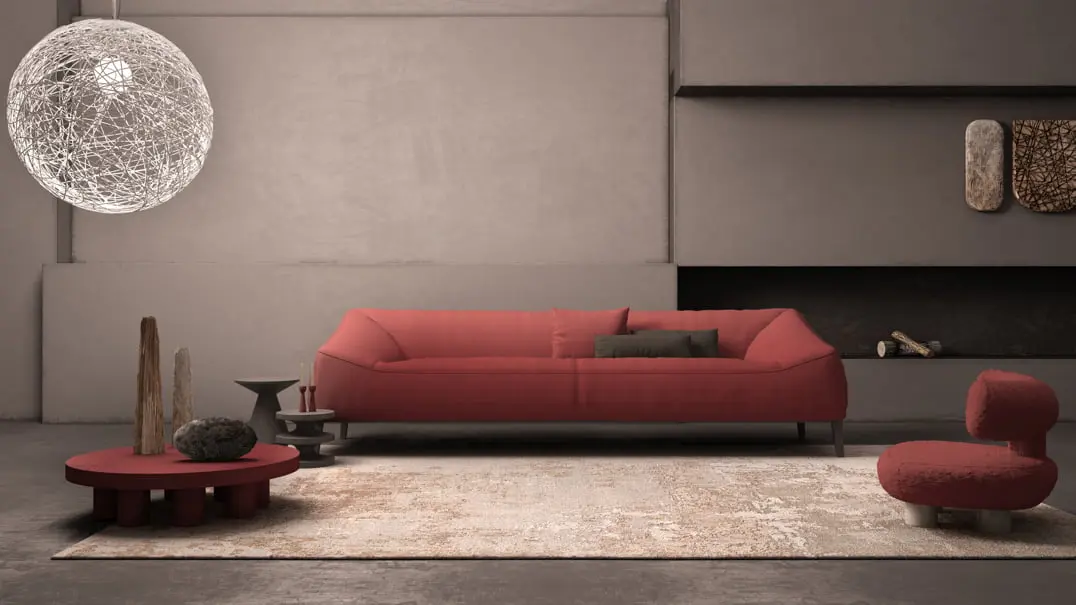Microcement in walls
The microcement in walls is much more than a high-strength material. It's a decorative coating designed to create fine, more natural, and high-decor finishes. It's the ideal product to achieve a finish similar to Venetian stucco.
Microcement on walls provides a luxurious, smooth, and shiny texture amid dreamy finishes. It beautifies any non-walkable surface and can be applied over cement, plaster or concrete.
The option to vary the color intensity in each layer allows achieving gradient finishes that multiply decorative possibilities. The chromatic combinations are infinite.
Advantages of microcement in walls
Microcement walls are the decorative solution to give a special touch to each space in the house. The wall coating can transform an office or home adapting to any decorative style.

- Coating designed to achieve unique and highly personalized finishes.
- Maximum adhesion and elasticity.
- Creates spaces with harmony and high-decor finishes on any support.
- Enhances the brightness and spaciousness of each room.
- Variety of colors and finishes.
- Suitable for indoor and outdoor surfaces, as it is a material with very high mechanical resistances.
- Greater durability compared to other coatings.
- Resistant to cracking and high temperatures.
- Easy to clean and maintain.
Microcement gallery on walls



Microcement finishes on walls
Microcement coatings are characterized by the water effect, something especially relevant to enhance the decorative value of the coating on the wall. This effect, which is less visible with lighter colors, gives a natural and handmade look to the surface.
Smooth finishes are the best presentation for microcement on walls, as they allow creating a coating endowed with the utmost smoothness and elegance. The fine texture is a good choice for the surface to convey a sophisticated and unmatched style.
A smoother wall is the perfect frame to showcase the microcement coating and enhance the decorative style of the space.
Rustic finishes are a bet to give the room a more traditional air. To create this aesthetic on the walls, it is necessary to opt for a larger granulometry, which provides a rougher texture. This type of finish also requires aesthetic coherence with the home decoration, which implies that all elements must breathe the same traditional air.
The choice of finishes is not limited to the application of microcement. With the final sealing of the surface, you can choose the appearance of the protective layer: gloss, matte, satin, or supermatte.
Microcement on walls: high decoration coating
Microcement on walls is synonymous with unique spaces, but decorating with wall coverings encompasses many possibilities that can be perfectly combined with microcement.
Metallic glazes are the best ally to bring freshness and enhance the artistic finishes of microcement. These paints are used to give volume or shine effects to the coating.
The association of microcement with glazes is ideal to give an artistic touch to the walls and take utmost care of the details of the finishes.
Cover walls quickly with a product that, unlike plastic paint and plaster, resists occasional blows.
The combination of microcement and glazes on walls offers impressive creative possibilities and an unmistakable personal stamp on any interior design project. The creative possibilities are limitless.

Tips for applying microcement on walls
Determine whether the surface is absorbent or non-absorbent. If the surface is porous, a primer for mortars and plasters should be applied to facilitate adhesion.
If the surface is not porous, an adhesion promoter for non-absorbent surfaces should be applied to facilitate adhesion with the mortar. This is the case for bricks or tiles.
Microcement on walls is applied with a trowel in a thin layer with short movements in all directions to break the pattern.
It is advisable to start applying the material at the top of the support and gradually lower it.
When coating walls of bathrooms with little ventilation, the applicator needs to bring a fan so that the surface dries and humidity does not condense in the environment.
The support must be level, dry, clean and free of grease. The planimetry must be in perfect condition before applying the microcement.
The ideal temperature to apply microcement is between 59º and 77ºF. In summer when temperatures reach 86 degrees, the material hardens very quickly.
All stains should be removed quickly before the microcement hardens.